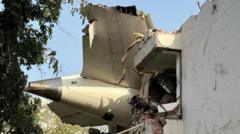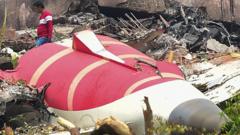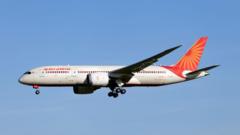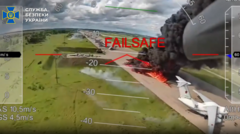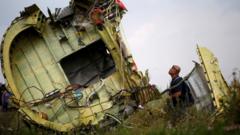Experts are advocating for simple adjustments in flight paths to combat the significant warming effects of contrails, which may rival emissions from fossil fuels as a climate concern.
**Inexpensive Solutions Proposed to Address Jet Contrails' Climate Impact**

**Inexpensive Solutions Proposed to Address Jet Contrails' Climate Impact**
A groundbreaking study presents easy and affordable strategies to mitigate climate damage caused by jet contrails, as discussions heat up for COP29.
Research shows that jet contrails, the vapor trails left behind by aircraft, could be modified for a minimal cost per flight, potentially offering a straightforward approach to lessening aviation's environmental footprint.
Contrails form when aircraft travel through cold, humid air, leading to vapor condensation. While the science of contrail formation is well-established, the serious climate impact of these artificial clouds has recently come into sharper focus.
Carlos Lopez de la Osa from the Transport & Environment organization, which conducted a study on contrails, points out that these trails can trap Earth's heat, thus doubling the warming effects attributed to fossil fuel use in aviation. As a result, the total warming impact from contrails can be comparable to the direct emissions from air travel.
The upcoming United Nations climate conference, COP29, scheduled to take place in Baku, will address contrails for the first time. This discussion comes amidst a swirl of misinformation, particularly regarding conspiracy theories involving "chemtrails" which falsely claim to be laden with harmful substances dispersed for sinister purposes.
Matteo Mirolo of Breakthrough Energy lamented that these unfounded theories detract from the urgency of addressing the genuine issue posed by contrails, which he emphasized lacks any scientific credibility.
The study indicates that about 80% of contrail warming is produced by merely 3% of flights, suggesting that minor alterations to the paths of a specific number of flights could significantly reduce contrails’ climate impact. According to the research, such alterations could cut contrail-related warming by over 50% by 2040 and at a cost of less than £4 ($5) per flight.
Geographic location, flight volume, and seasonal weather conditions notably contribute to contrail warming, especially in regions like North America and Europe where the bulk of contrail warming was recorded.
Lopez de la Osa further noted that while pilots already modify routes to navigate around turbulence and storms, flight planning could incorporate additional parameters to avoid areas conducive to contrail formation.
As COP29 unfolds, the team behind this research aims to raise awareness and foster consensus on the potential of simple, effective solutions in addressing climate concerns associated with aviation. They emphasize that while sustainable aviation fuels are crucial, tackling the contrail issue could deliver significant climate benefits at a much lower fiscal impact.

